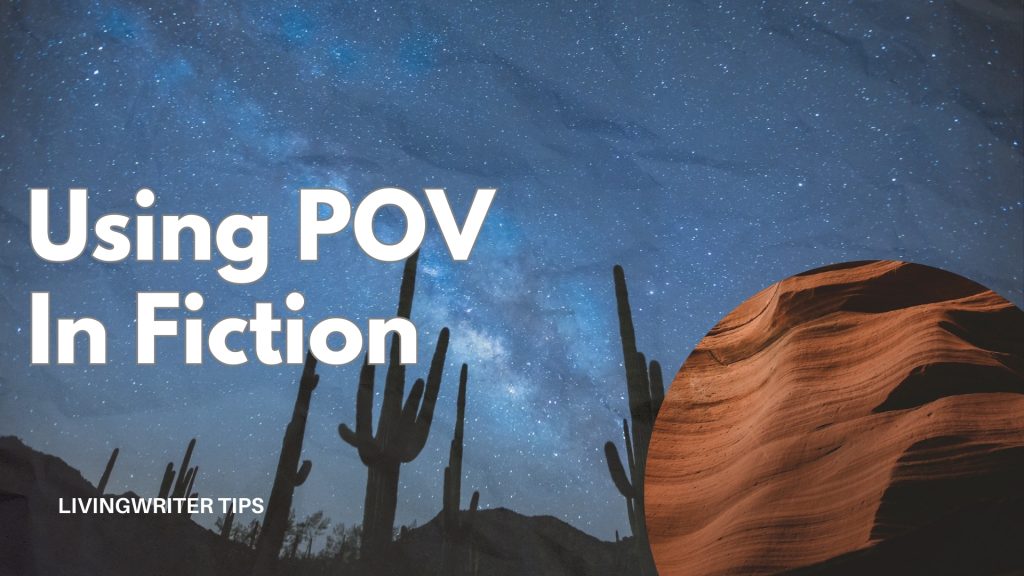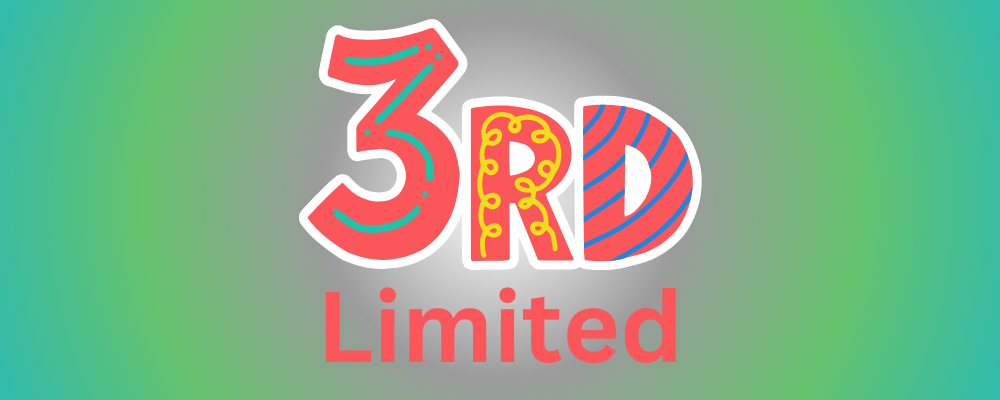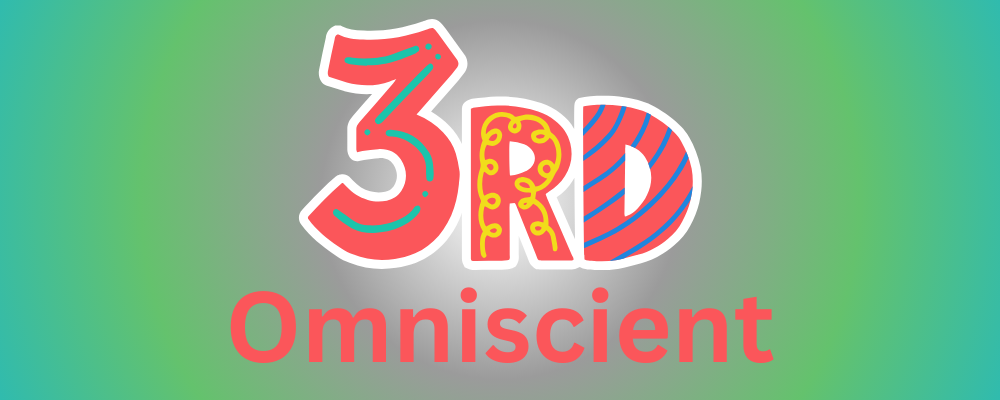First-Person Vs. Third-Person POV In Fiction

Point of view (POV) is a fundamental part of fiction writing, and choosing the right one can make all the difference in the impact and effectiveness of your story. And choosing the wrong one or unintentionally switching between them mid-scene can hinder an otherwise good story. Today, I’ll be covering everything you need to know about first-person vs. second-person, vs. third-person POV in fiction. Let’s start with what POV is and why it matters.
“POV” is essentially the lens through which your reader experiences your story. It determines how much access they have to your characters’ thoughts, feelings, and motivations. Choosing the right POV allows you to control the flow of information, build suspense, and create an atmosphere that fits your narrative.
Today’s article will explore the three main perspectives commonly used in fiction: first-person, third-person limited, and third-person omniscient. Plus, a lesser-used POV. We’ll discuss the pros and cons of each POV, along with examples of how they can be used effectively. We’ll also learn practical tips for maintaining consistency within your chosen POV and avoiding “head-hopping.” So, without further ado, let’s get into understanding POV in your writing.
Table of Contents
What Is Point of View In Fiction
As a writer, you can control the lens through which your readers experience your story. Point of view (POV) is your chosen narrative perspective, dictating how much access readers have to your characters’ inner thoughts and knowledge, which shapes a lot of your writing.
For example, imagine a scene of a tense negotiation. In first-person POV, we only know the thoughts and feelings of the character we’re following. In third-person limited, we might see the sweat beading on the other character’s brow, hinting at their anxiety. Third-person omniscient POV would reveal the inner turmoil of both characters, creating a more comprehensive view of the situation.
You May Also Like: Mastering Pacing In Novels And Screenplays
The chosen POV changes the atmosphere of your story, how you build tension, and how you develop characters. If you’re not at least considering and maintaining POV in your fiction, you should be. So, let’s delve into the main POVs commonly used in fiction.
What Is First-Person?

The First-person point of view is basically “Inside the Character’s Head.” It puts you right in the heart of the story, experiencing everything through the eyes (and mind) of a single character. Imagine it like a camera strapped to the protagonist’s chest, capturing their unique perspective. This POV uses pronouns like “I,” “me,” “my,” and “mine,” as the character narrates their own thoughts, feelings, and observations.
Pros of First-Person POV:
- Unparalleled Intimacy: Readers gain direct access to the protagonist’s inner world, fostering a strong emotional connection to their journey. Their thoughts, feelings, and sensations become the reader’s own, creating a sense of immediacy and shared discovery.
- Suspense and Uncertainty: Readers experience the story alongside the protagonist, sharing their uncertainties and limitations in knowledge. This can heighten suspense as both the reader and the character grapple with unfolding events.
Cons of First-Person POV:
- Limited Access: First-person POV restricts readers’ access to other characters’ inner thoughts and motivations. The reader can only know what the protagonist perceives, potentially creating a biased view of events or other characters.
- Scene Restriction: The story is limited to what the protagonist witnesses or experiences directly. Scenes where the protagonist is absent, cannot be shown directly through their POV, requiring the author to create creative workarounds via literary devices.
First Person Example:
Here’s a passage from “The Hunger Games” by Suzanne Collins, written in first-person POV:
“I wake with a start, the sheets tangled around my legs. Sunlight streams through the window, illuminating the dust motes dancing in the air. My head throbs, and a dull ache settles in my stomach. What day is it? Panic claws at my throat. The reaping.”
This passage exemplifies first-person POV by using “I” and focusing solely on Katniss’s thoughts and immediate experience. We don’t know what her mother or sister are feeling, and the passage ends before we learn more about the reaping itself, a scene Katniss might not witness directly.
What Is Third-Person Limited?

I like to refer to third-person limited POV as “Witnessing the Protagonist’s Journey.” It offers a close vantage point on a single character’s experience. Imagine a fly discreetly perched on the protagonist’s shoulder, observing their thoughts, feelings, and actions. This POV uses pronouns like “he,” “she,” “they,” and “it” to narrate the story, but with a focus on the internal world of the chosen character.
Pros of Third-Person Limited POV:
- Balance of Intimacy and Objectivity: Readers gain valuable insights into the protagonist’s thoughts and emotions, creating a connection with their journey. However, the narration also maintains a level of objectivity, allowing readers to observe the character’s actions and the world around them from a slightly broader perspective.
- Scene Flexibility: Unlike first-person POV, third-person limited offers more freedom in scene depiction. The narrator can move beyond the protagonist’s immediate experience, showing events they might not be present for or offering glimpses into other characters’ actions and surroundings. This allows for a more well-rounded portrayal of the story’s world.
Cons of Third-Person Limited POV:
- Limited Access to Inner Lives: Similar to first-person POV, readers are somewhat restricted to the chosen character’s worldview. The thoughts, feelings, and motivations of other characters remain a mystery unless revealed through the protagonist’s observations or interactions.
- Suspense Building: Crafting suspense can be more challenging in third-person limited POV. If the reader has access to information the protagonist doesn’t, it can lessen the sense of uncertainty or surprise. So, you’ll need to carefully manage this information flow to maintain tension.
Third-Person Limited Example:
Here’s a passage from “The Handmaid’s Tale” by Margaret Atwood, written in third-person limited POV:
Offred sat in the Commander’s study, hands folded in her lap. The room was lined with bookshelves crammed with leather-bound volumes. She wasn’t supposed to read them, of course. She wasn’t supposed to do a lot of things. But sometimes she dared. Her heart hammered against her ribs. What if he came in? What if he found her?
This passage exemplifies third-person limited POV by focusing on Offred’s thoughts and anxieties (“She wasn’t supposed to read them…Her heart hammered”) without being from her own POV. While we don’t have direct access to the Commander’s thoughts, the passage describes the room and the potential consequences, building tension for Offred and the reader.
What Is Third-Person Omniscient?

You can think of third-person omniscient as the “All-Seeing Eye.” It grants the narrator godlike knowledge of the entire story. Imagine a narrator soaring high above the characters, able to peer into the minds and hearts of everyone involved. This POV uses pronouns like “he,” “she,” and “they” but boasts the freedom to shift focus between characters, revealing their thoughts, feelings, and actions.
Pros of Third-Person Omniscient POV:
- Narrative Freedom: This POV offers writers unparalleled freedom. The narrator can seamlessly move between characters, providing insights into their motivations, internal struggles, and external actions. This allows for a rich and well-rounded portrayal of the story’s world and the characters who inhabit it.
- Complex Plots and Large Casts: Omniscient POV is well-suited for stories with intricate plotlines or a vast cast of characters. The narrator can effortlessly weave together multiple storylines and perspectives, ensuring readers have a comprehensive understanding of the narrative.
Cons of Third-Person Omniscient POV:
- Distance and Objectivity: The omniscient perspective can create a sense of distance between the reader and the characters. Readers don’t experience the story through a single character’s lens, which can diminish the emotional connection. Additionally, maintaining a consistent narrative voice that doesn’t intrude on the story can be challenging because all the characters can’t sound the same.
- Suspense and Tension: The narrator’s all-knowing nature can sometimes lessen suspense. If readers have access to information that certain characters don’t, it can reduce the feeling of uncertainty or surprise.
Third-Person Omniscient Example:
Here’s a passage from “A Tale of Two Cities” by Charles Dickens, written in third-person omniscient POV:
Lucy watched Charles Darnay from her window, a tremor of fear running through her. She sensed danger approaching, a darkness lurking beneath the surface. Meanwhile, Sydney Carton nursed his secret love for Lucy in the shadows, his heart heavy with despair.
This passage exemplifies omniscient POV by offering insights into the thoughts and emotions of multiple characters (“Lucy watched…fear running through her” and “Sydney Carton nursed his secret love”). The narrative voice also offers external details about the scene with (“darkness lurking”).
What Is Second-Person POV?

The second-person point of view (POV) thrusts readers right into the action, making them the main character. Imagine them as the protagonist, experiencing the world and its challenges firsthand. This POV uses the pronoun “you” to directly address the reader, blurring the lines between them and the story.
Pros of Second-Person POV:
- Immersive Experience: When done well second-person POV offers great immersion. Readers become active participants in the story, experiencing the world through the protagonist’s eyes, feeling their emotions, and hearing their inner monologue as if it were their own. This can foster a strong sense of connection and a heightened sense of agency in the narrative.
- Unique Storytelling: This unconventional POV allows for creative storytelling techniques. Internal monologues can be woven directly into the narrative, and the reader can be presented with choices that influence the story’s direction (often seen in interactive fiction).
Cons of Second-Person POV:
- Limited Scope: Second-person POV inherently limits the story’s scope. The reader’s perspective is tied to the protagonist, making it difficult to explore the thoughts and motivations of other characters. This can create a sense of narrative confinement.
- Maintaining Voice: Crafting a consistent and engaging second-person voice can be challenging. Writers need to strike a balance between directly addressing the reader and maintaining a natural narrative flow. Overuse of “you” can become repetitive and break immersion.
Second Person POV Example
Here’s a passage from “Fight Club” by Chuck Palahniuk, written in second-Person POV:
Your eyes snap open. The first thing you register is the pulsating ache behind your eyelids. A dull throbbing spreads through your skull. You try to remember what happened last night, but your mind is a fuzzy mess. You sit up, wincing at the sharp pain that shoots through your body. Where are you? And how did you get here?
This passage exemplifies second-person POV by using “you” to directly address the reader and place them in the protagonist’s disoriented state. The passage builds intrigue by withholding information and presenting questions the reader might be asking.
Choosing A POV And Sticking To It
Once you’ve chosen your POV, consistency is key. Avoid head-hopping, which is the act of switching POVs within a scene. This can disorient your readers and disrupt the emotional connection they’ve built with a particular character.
However, there are exceptions to the “pick one and stick to it” advice; You can use multiple perspectives within a single story. The caveat is that it’s done intentionally and with a purpose. For example, imagine you’re writing a fantasy epic where you experience the vastness of war through the eyes of a young soldier and then gain strategic insights from a seasoned commander’s perspective.
Or perhaps a romance novel where alternating between the viewpoints of the two lovers allows you to delve deeper into their hopes, fears, and vulnerabilities. When done correctly, multiple perspectives can be a powerful tool in your storytelling arsenal.
You May Also Like: How To Write Like Stephen King (And Still Be Unique)
Here are some tips that can help you shift perspectives.
When To Use Multiple POVs
Sticking to a single POV offers a focused reading experience but strategically incorporating multiple perspectives can be a powerful tool too. Multiple POVs can enrich your story by providing a wider lens on events, showcasing contrasting viewpoints of characters, and fostering deeper reader engagement with the narrative’s complexities.
However, you can’t jump around without cause or care. Luckily, there are a few effective ways to incorporate multiple perspectives into your narrative without confusing the reader. Here are some times you could use multiple POVs and approaches to consider.
Multiple POV Characters: Seeing the Bigger Picture
Imagine a sprawling fantasy epic where a war unfolds. Sticking to a single soldier’s perspective might limit your ability to showcase the war’s grand scale. In situations like this, using multiple characters POV can be a powerful tool.
For example, you could alternate between a young, idealistic prince witnessing the war’s human cost and a hardened veteran strategizing the conflict’s broader goals. What’s important is that each character offers a unique lens, enriching the narrative with contrasting viewpoints and giving readers a more comprehensive understanding of complex themes.
Limited Third-Person with Head-Hopping
Head-hopping, briefly jumping into different characters’ minds within a limited third-person scene, can be risky. It can yank the reader out of the current character’s perspective and disrupt the flow. However, used sparingly and strategically, it can add depth.
Imagine a tense scene where a hero confronts a villain. A quick glimpse into the villain’s thoughts, like a flash of fear or a surge of rage, can heighten the suspense for readers invested in the hero’s success. The key is to use this technique like a surgeon’s scalpel, making precise cuts for maximum impact, not a lumberjack’s chainsaw, creating chaos.
When considering this, ask yourself what the readers stand to gain from a brief glimpse into the perspective of another character, and make sure it’s a justified jump.
Important Considerations:
- Clarity is Key: No matter how many POVs you choose, ensure clear transitions between them. Use chapter breaks, scene breaks, or distinct narrative voices to signal a shift in perspective.
- Justification Matters: Every POV shift should serve a purpose. Ask yourself if the information gained from a new perspective is essential to the story.
- Don’t Overdo It: Too many POVs can be overwhelming for the reader. Aim for a balance that enhances your story without creating confusion.
By carefully considering these techniques and limitations, you can effectively incorporate multiple POVs into your narrative and create a richer, more engaging reading experience.
Common POV Mistakes To Avoid
Story POV can present some challenges. This section will explore a few areas where I find inconsistencies can arise unintentionally. I highlight these potential pitfalls so you can ensure your chosen POV remains focused and effective throughout your story.
1. Third-Person Limited POV Slip into Omniscience
This may be the most common POV slip-up. Imagine a scene written in third-person limited from the perspective of your protagonist, Sarah. The scene depicts Sarah exploring a creepy abandoned house. Here’s an inconsistent passage:
Sarah crept down the dusty hallway, her heart pounding in her chest. Every creak of the floorboards sent shivers down her spine. Suddenly, a loud crash echoed from the room at the end of the hall. Sarah froze, fear paralyzing her. Little did she know, a shadowy figure lurked in the darkness, watching her every move.
This example starts well, staying in Sarah’s limited perspective. However, the bolded sentence shifts into omniscience. The reader suddenly has access to information Sarah doesn’t—the presence of the shadowy figure.
Here’s an improved version, demonstrating how to stay in Sarah’s limited POV:
Sarah crept down the dusty hallway, her heart pounding in her chest. Every creak of the floorboards sent shivers down her spine. Suddenly, a loud crash echoed from the room at the end of the hall. Sarah froze, her mind racing with possibilities. Was it an animal? Or something more sinister? The silence that followed the crash was even more terrifying.
This revised passage stays within Sarah’s perspective, letting the reader experience her fear and uncertainty. The details and Sarah’s internal dialogue help build suspense without revealing information she doesn’t have.
2. Head-Hopping Between Characters in First-Person
Imagine a scene written in first-person from the perspective of John, who is arguing with his best friend, Mark. Here’s an inconsistent passage:
“You can’t just keep doing this, Mark!” I yelled, frustration boiling over. He remained silent, staring at the ground. I knew he was upset, but his stubbornness was infuriating. Mark felt a surge of anger rise within him. John never understood his perspective.
This example starts from John’s perspective but then switches to reveal Mark’s internal feelings using third-person narration (“Mark felt”). This creates a head-hopping situation, disrupting the flow and potentially confusing the reader about whose thoughts they’re privy to.
3. Third-Person Limited “He Thinks” Syndrome
Third-person limited POV offers a glimpse into a single character’s perspective. That said, it can lead to an overuse of phrases like “he thinks,” “she wonders,” or “he realized,” which can create a repetitive and clunky reading experience. This is often referred to as “he thinks” syndrome.
To avoid this, you should use vivid descriptions and actions to reveal things instead of directly stating a character’s thoughts. An example of a sentence that could get you into trouble if you used it enough could be:
“John rummaged through his desk drawer, frustration creeping into his face. He realized he’d misplaced his car keys again.”
Utilize Internal Dialogue: When appropriate, sprinkle in snippets of the character’s thoughts directly, using quotation marks. This adds immediacy and authenticity.
An improved example that shows instead of simply telling could be:
“John ransacked his desk drawer, papers scattering like startled birds. A low growl escaped his clenched teeth. Where on earth were those car keys?”
Another option is to describe how the character interacts with their environment and reacts to events. This can subtly reveal their thoughts and emotions. For example:
John slammed the drawer shut, the sound echoing through the silent room. He ran a hand through his hair, his shoulders slumping in defeat.
Minimizing “he thinks” phrases and showing the character’s internal world through action and description can create a more engaging and immersive reading experience in third-person limited POV.
How To Chose The Right POV
There is no right or wrong POV. Choosing the right point of view will almost always come down to the individual story. Beyond that, some writers naturally write better in one POV or another. So, here are a few things to consider when trying to determine which one is right for you and your story.
Align POV With Story Goals
The POV you choose should serve the story’s core objectives. Ask yourself: What level of intimacy do you want to create with your characters? How much information needs to be revealed at any given moment? For instance, first-person POV offers a deep dive into a single character’s psyche, while third-person omniscient allows you to orchestrate events from a godlike perspective. Different POVs have different strengths, and understanding these will help you pick the one that best suits your storytelling goals.
Finding Your Voice: Comfort And Expertise
It’s also natural for writers to gravitate towards certain POVs. Some may find the immediacy of first-person a perfect fit for their voice, while others might excel at the detached objectivity of third-person limited. Embrace your strengths! If you find yourself consistently drawn to a particular POV, explore it and hone your skills within it.
There’s no shame in having a favorite POV – after all, the most important thing is to use it effectively to tell your story. That said, practice makes perfect, and exploring POVs you’re less comfortable with can help you grow as a writer.
Disciplined Execution: Staying on Track
Once you’ve chosen your POV, staying focused is key. As you write each scene, remind yourself of the perspective you’ve established. This mindfulness helps prevent accidental slips that can disorient your readers.
Reading your work aloud is a fantastic tool for identifying inconsistencies in POV. This practice allows you to catch areas where the narrative voice might feel jarring or out of place. If you find yourself slipping into another character’s head or using phrasing that doesn’t fit the chosen POV, it’s a red flag that needs attention during revision.
Conclusion
Point of View is an important tool that shapes how readers experience your narrative. Understanding the different POVs, their strengths and weaknesses, and maintaining consistency, can draw your readers into the hearts and minds of your characters.
So, the next time you sit down to write, take some time to consider the perspective that best serves your story. With careful planning and execution, you can use POV to its full potential, weaving a narrative that resonates with your readers on a deeper level. Now, get out there and write something.